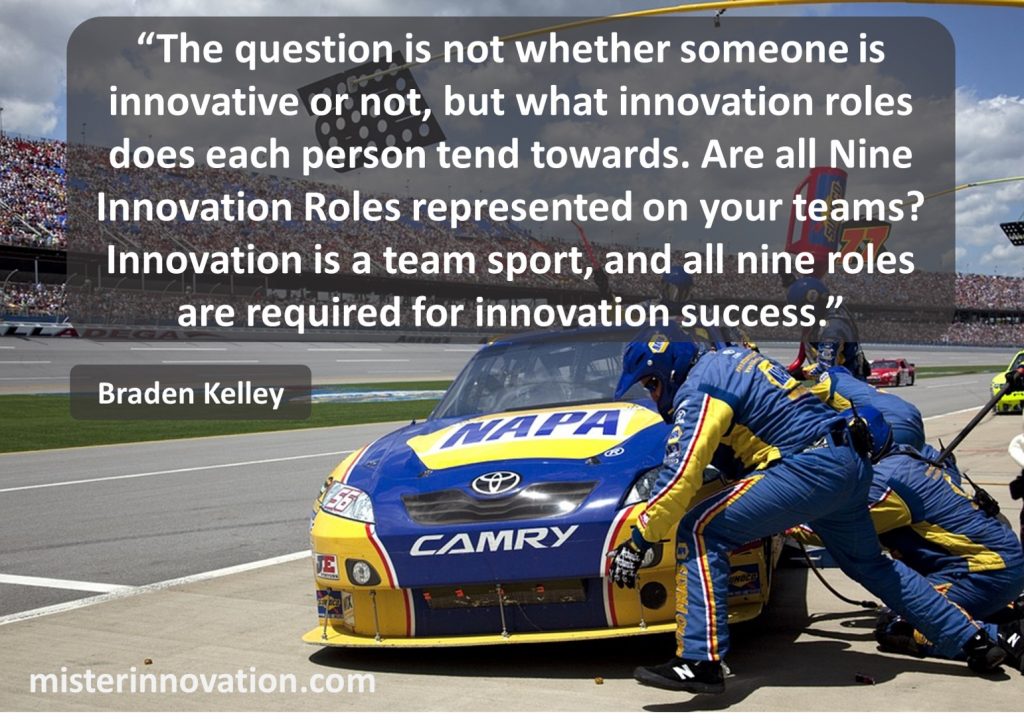
by Braden Kelley
Eight years ago, back in 2016, I wrote an article titled What April Fool’s Day Teaches Us About Innovation about an April Fool’s prank played my alma mater, the University of Oregon involving an announcement that football games at Autzen Stadium would no longer played on artificial turf, but would be played on a giant digital screen instead. Here is the video:
It seemed preposterous at the time (2016) during the era of the technologically ancient Apple iPhone 7 and Samsung Galaxy S7 when the average LCD TV size according to Statista was only 43 inches.
Fast forward to February 16, 2024 and NBA All-Star Weekend in Indianapolis, Indiana and we saw the first ever basketball game of note held on a glass basketball court. But isn’t glass slippery when wet? Yes, but so is a heavily lacquered hardwood court – believe me I know from repeated spills during pickup basketball games. To help give it the traction of a hardwood court they’ve engineered thousands (or maybe millions) of tiny raised dots onto the glass surface.
Sports are always experimenting with various technologies, some of which don’t work out (like the tail following the puck on hockey broadcasts), and others which are executed so well that they enhance the viewing experience (first down yardage line in American football) or that most people don’t even know that they exist (advertisements projected onto the court in basketball television broadcasts that aren’t actually on the court but look as if they are).
So, how has this 2016 April Fool’s prank visualization evolved into a 2024 reality? What does it look like? Here is a video that will give you a sense of its capabilities:
First let me say this a pretty incredible technology that has definitely added to the excitement of this year’s NBA All-Star Weekend, but second I must also say that I would NEVER want to watch a regular NBA, college or international game played on a court like this because for me, sporting events are a time to unplug from technology, not be over-stimulated by it. But, for a special event like NBA All-Star Game Weekend or maybe the Harlem Globetrotters I think it makes sense.
How does this court make the leap from invention to innovation you might ask?
How does this court not find itself in the digital trash can next to the tail on the hockey puck?
The short answer is that scores well on my Innovation is All About Value framework. It creates value by adding value to the contest (skills challenge, celebrity all-star game), translates that value very quickly because it’s all visual, and the barriers to value access are non-existent for all but the visually impaired.
The court allowed the NBA to hold different games with different rules and lines on the same court without changing courts or making physical modifications. For example, the celebrity all-star game had a four point line (sponsored by Frito Lay) and at times the three point and four point lines even were actively moving. There was also a micro competition in game where three people ran to stars that appeared on the floor and shot and when they made a shot there a new star appeared and you could see over time which side of the court was winning because you could see which side had more stars. There was another moment where for a limited time the coaches faces appeared on the court and six points were awarded for each shot made from that spot. The dynamic nature of the game meant that you almost didn’t know what might come next – which was kind of exciting.
The integration of the court into the competition occurring upon it is what helps this technology make the leap from invention to innovation. But again, for me, only in special use cases like an All-Star game, an entertainment-based event or skills competition, but NOT for a pure competition use case where in my mind it distracts from the sport.
Here is a video of the skills challenge relay race – notice that the floor shows the player which way to go, but despite that Tyrese Maxey still goes the wrong way and has to double back. 😉
Then in the skills challenge passing team event the floor showed players where to stand and how many points had been scored at each of three targets. Again, it felt like part of the event and it allows the court to be instantly and uniquely re-configured.
And here are video highlights of the celebrity all-star game where you can see some of what I mentioned above:
So, what do you think? Innovation or not?
Image credit: NBA.com
![]() Sign up here to get Human-Centered Change & Innovation Weekly delivered to your inbox every week.
Sign up here to get Human-Centered Change & Innovation Weekly delivered to your inbox every week.
